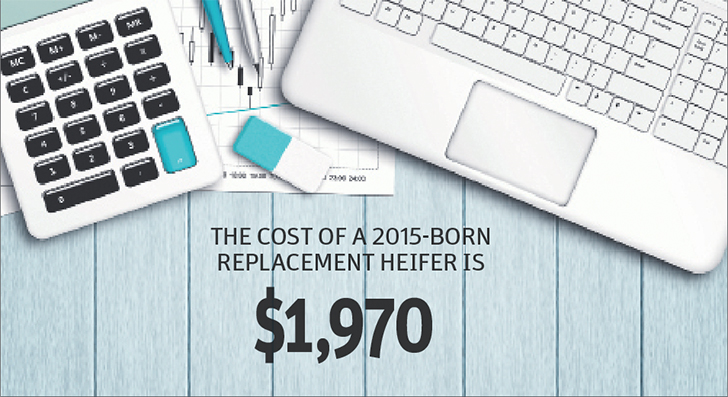Online calculator can help producers determine how long a cow should stay in the herd to recoup replacement costs
Several factors come into play when deciding to cull a cow from a herd.
She may be old, open or mean, but economics are important.
Kathy Larson, an economist at the Western Beef Development Centre, says the costs of developing replacement females should be considered.
Culling cows too soon can represent a missed economic opportunity.
The WBDC offers a calculator for producers to determine exactly what a female costs and how long it has to stay in the herd to recoup those costs.
Read Also

Canadian Food Inspection Agency slammed for handling of bovine tuberculosis case
The federal government leans heavily on producers to “take one for the team” and risk their livelihoods without any reassurance of support.
Larson calculated the cost of a 2015-born replacement, from weaned calf to confirmed pregnant and using the numbers from the WBDC, at $1,970.
A replacement born in 2014 was significantly more expensive, given where calf prices were then.
Larson uses another calculator to show how many calves that female would have to produce to earn its money back, based on different calf prices.
The 2015 female would need to have at least seven calves if they sold for $1.90 per pound at 550 lb. However, if calf prices were higher, say $2.50, it would need to produce only four of them to recoup its costs.
If that same female had been bought for $3,500, it would need to produce 12 calves at $1.90 and six at $2.50.
“The number of calves this 2015-born female needs to wean in order to recoup that investment will depend on the producer’s cost of production and calf prices,” Larson said.
“Ideally, a producer needs to keep his females until they recoup that development cost, or purchase price if (the) producer buys bred heifers.”
Studies have shown that most cows stay in herds from three to nine years.
The most common reason producers give for culling a cow is age, but a North Dakota study found that coming up open was actually the top reason.
The study in the mid-1990s found that age was the second reason, followed by selling the cow as a replacement and then culling it for physical defects or inferior calves.
A later study from the U.S. Department of Agriculture found that more than half of producers said they culled for age or bad teeth (56 percent) and then open status at 42 percent. Temperament was a factor in 17 percent of cases, reproductive problems in 13 percent, economics such as herd reduction due to drought 11 percent, and poor calves 11 percent. Poor body condition, poor udders and bad eyes were other reasons.
A large-scale western Canadian study in the early 2000s that included more than 30,000 females in more than 200 herds found similar results.
“Culling practices by producers in this region are consistent with previously published recommendations that, accounting for pregnancy status, body condition score and replacement costs, the optimal age for culling is seven to eight years of age,” said the study published in the Canadian Veterinary Journal.
In 2011, Dan Childs, senior agricultural economist at the Samuel Noble Foundation, an independent U.S. research organization, suggested culling in the following order: disposition, open, structural soundness, age, bred cows more than nine years old, replacement heifers, phenotype and bred cows between three and nine years of age.
He said the first four factors are easier to assess, but after culling for age it becomes more difficult because producers are looking at their productive animals.
“Typically a cow is most productive between the ages of four and nine,” he wrote on the foundation’s website.
Bred cows that are older than nine are nearing the end of their productive lives. Cull the thin ones first, he advised.
Yearling heifers not exposed to a bull have good value as feeders, and bred heifers also have value as replacements.
Culling for phenotype allows a producer to make a herd more uniform. Breed, size and low productivity come into play here.
Finally, culling bred cows between three and nine is the most difficult because these are the most productive cows.
“If you must cull out of this group, three year olds and those cows that are eight to nine would go first,” Childs wrote.
The WBDC calculators can be found at wbdc.sk.ca.
















